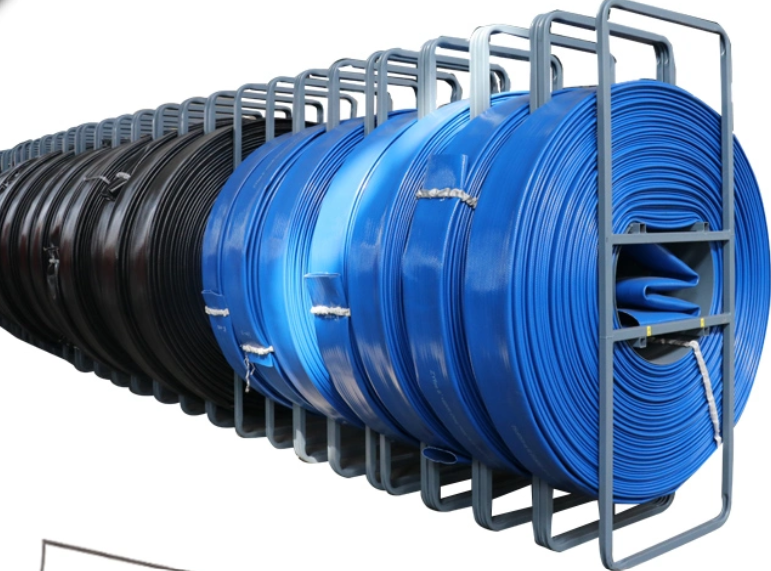air hose rubber vs pvc
Air Hose Rubber vs PVC
When it comes to selecting the right air hose for your pneumatic applications, the choice between rubber and PVC (polyvinyl chloride) often arises. Both materials offer unique advantages and drawbacks that can affect performance, durability, and overall functionality. Understanding the difference between rubber and PVC air hoses will help you make an informed decision that meets your specific needs.
Composition and Properties
Rubber air hoses are crafted from natural or synthetic rubber, which gives them excellent flexibility and resilience. They can withstand extreme temperatures, ranging from low to high, making them suitable for a variety of environmental conditions. The elasticity of rubber also allows hoses to be coiled without kinking, which is ideal for storage and transport.
On the other hand, PVC air hoses are made from a type of plastic known for its lightweight and economical nature. PVC is less flexible than rubber, which might pose challenges in terms of coiling and maneuverability. However, modern advancements in PVC formulations have improved their flexibility, making them a more viable option for certain applications.
Durability and Resistance
One of the significant advantages of rubber air hoses is their durability. Rubber is resistant to abrasions, impact, and various chemicals, allowing them to last longer in demanding conditions. They also resist UV rays, meaning they won’t degrade quickly when exposed to sunlight. This makes rubber hoses an excellent choice for outdoor use, where environmental factors are at play.
In contrast, while PVC hoses offer decent resistance to abrasion, they tend to be less durable when facing rough handling or extreme conditions. PVC can become brittle over time, especially when exposed to UV light and extreme temperatures, which may lead to cracking or rupturing. Therefore, while PVC hoses may initially be more cost-effective, their lifespan may not match that of rubber hoses in high-stress environments.
air hose rubber vs pvc

Performance Under Pressure
When evaluating air hoses, it’s crucial to consider their performance under pressure. Rubber hoses can typically handle higher pressure ratings, making them suitable for heavy-duty applications where high-pressure air is required. They maintain their integrity under stress, ensuring a consistent flow of air without leakage.
PVC hoses may not perform well under high pressure. Although they can handle moderate levels of pressure, pushing them beyond their limits can result in failure. For applications requiring high pressure, rubber hoses are generally the safer option.
Cost Considerations
One of the most significant factors in deciding between rubber and PVC air hoses is cost. PVC hoses are typically more budget-friendly than their rubber counterparts. This affordability makes PVC an attractive option for casual users or for projects where longevity is not a primary concern. However, investing in a rubber hose might provide better value in the long run due to its durability and performance.
Conclusion
In summary, the choice between rubber and PVC air hoses largely depends on your specific needs and the nature of your projects. Rubber hoses are ideal for heavy-duty applications, offering superior durability, flexibility, and pressure handling. They are particularly well-suited for challenging environments and prolonged outdoor usage. Conversely, PVC hoses may serve adequately for lightweight applications where cost is a major factor and where high pressure is not a concern.
Ultimately, evaluating the environments in which the hoses will be used, the types of tasks they will perform, and your budget will lead to the best choice. By carefully weighing the pros and cons of each material, you can select the air hose that will serve you best in the long run, ensuring efficient and effective performance in your pneumatic applications.
-
Top Quality Oxy Acetylene Hoses for Sale Fit for Welding DemandsNewsJul.28,2025
-
The Future of Pneumatic Air Tubes in IndustryNewsJul.28,2025
-
Superior and Reliable LPG Hose Pipe Solutions for Every NeedNewsJul.28,2025
-
Exceptionally Durable and Versatile Premium Braided PVC TubingNewsJul.28,2025
-
Best Adapters for Connecting Garden Hose to PVC Pipe ConnectionsNewsJul.28,2025
-
The Essential Role of LPG Hoses in Safe and Efficient Gas DistributionNewsJul.16,2025














